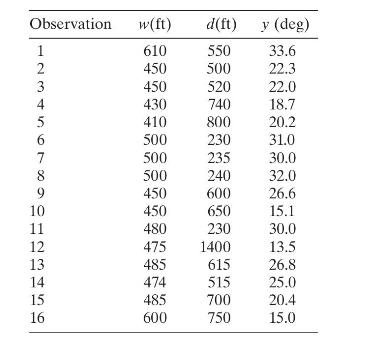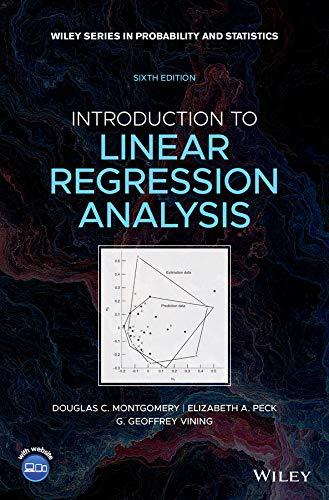A major problem associated with many mining projects is subsidence, or sinking of the ground above the
Question:
A major problem associated with many mining projects is subsidence, or sinking of the ground above the excavation. The mining engineer needs to control the amount and distribution of this subsidence. This will ensure that structures on the surface survive the excavation. There are several factors that affect the amount and nature of the subsidence. Among these are the depth of the mine and the width of the excavation. An important variable, which aids in characterizing the condition, is known as the angle of draw, \(y\). It is defined as the angle between the perpendicular at the edge of the excavation and the line that connects the same edge of excavation with the point on the surface for which there is zero subsidence. Engineers generally feel that the angle of draw should relate well to the ratio of the width \((w)\) of the excavation to the depth \((d)\) of the mine. It is also suspected that any relationship involved is nonlinear. The following is a data set collected by the Mining Engineering Department at Virginia Tech for mining excavations in West Virginia.

a. Fit a linear regression model of the form \(y=\beta_{0}+\beta_{1} w+\beta_{2} d+\varepsilon\) to these data. Investigate the adequacy of this model.
b. Fit the nonlinear model
\[
y=\beta_{1}\left[1-\exp \left(-\beta_{2}\left(\frac{w}{d}\right)\right)\right]+\varepsilon
\]
to these data. Investigate the adequacy of this model.
c. Which model do you prefer? Explain why.
Step by Step Answer:

Introduction To Linear Regression Analysis
ISBN: 9781119578727
6th Edition
Authors: Douglas C. Montgomery, Elizabeth A. Peck, G. Geoffrey Vining





